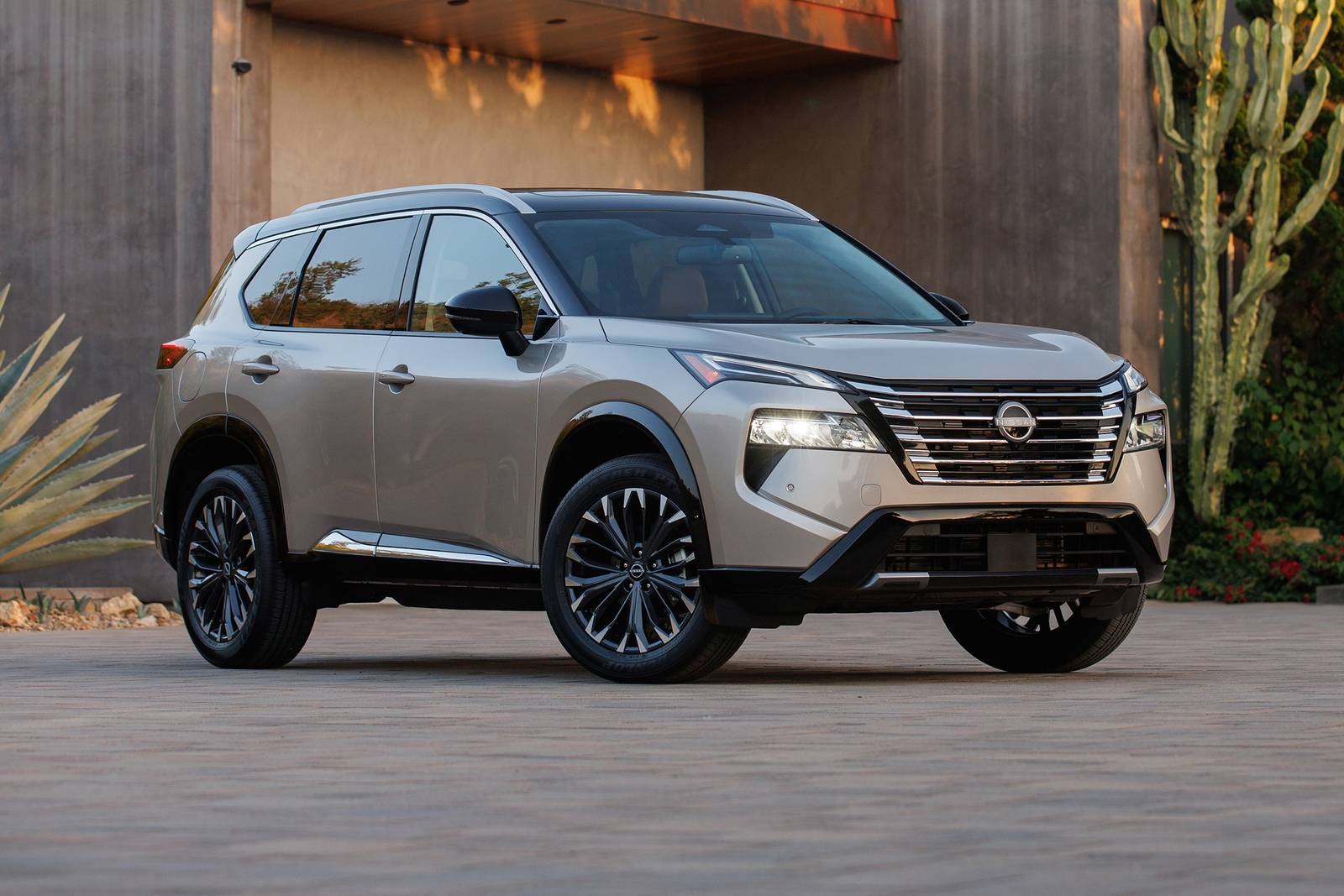When it comes to SUVs, driving experience is about far more than just horsepower, cargo space, or off-road capabilities. One of the most critical, yet often overlooked, factors influencing daily driving comfort and enjoyment is the steering feel. How much effort is required to turn the wheel?
Does the steering provide a light, effortless touch, or does it demand deliberate, physical input? For many drivers, the answer to these questions can dramatically shape how they perceive their vehicle—and how tiring or enjoyable their daily commute becomes.
Steering effort varies widely across the SUV market, primarily due to differences in vehicle size, design philosophy, intended use, and technology. For example, a small crossover built for urban use often prioritizes light, easy steering to reduce driver fatigue during stop-and-go traffic and parking maneuvers.
On the other hand, rugged off-roaders and large full-size SUVs may feature heavier steering systems that provide more feedback and control on challenging terrain but require more arm strength and endurance on city streets.
Understanding these differences is crucial when choosing an SUV that matches your lifestyle and driving preferences. A vehicle with light steering can feel nimble and approachable, perfect for navigating tight city streets, daily errands, or long highway drives.
Conversely, a heavier steering effort, while sometimes more physically demanding, may offer enhanced road feel and durability—key traits for drivers who prioritize off-roading or towing.
In this article, we’ll explore two ends of the spectrum: five SUVs known for their lightest steering effort and five that require a more arm-intensive driving style.
We’ll dive into what makes these vehicles handle the way they do, breaking down the mechanical and design reasons behind their steering characteristics. This exploration will help drivers appreciate how engineering choices translate into real-world steering experiences—and why that matters behind the wheel.
The first half highlights SUVs designed for effortless maneuverability, focusing on comfort, urban usability, and modern electric power steering systems.
These vehicles typically employ advanced technology to minimize steering weight, making them a breeze to drive in tight spots or during extended periods on the road. Whether it’s the smooth precision of a luxury compact or the easy hand-feel of a popular midsize crossover, these models showcase the benefits of steering that feels almost effortless.
On the flip side, we’ll examine SUVs that demand a bit more physical commitment from their drivers. Many of these models are built with rugged, traditional engineering approaches such as body-on-frame construction, solid axles, and slower steering ratios.
While these features are invaluable for off-road capability and durability, they tend to result in heavier steering feel—especially noticeable at low speeds or during prolonged maneuvering. From classic off-roaders like the Jeep Wrangler to full-size titans like the Chevrolet Tahoe, these vehicles embody the “arm day every day” ethos.
By understanding these contrasts, you can better gauge what kind of steering experience suits you best. Are you seeking the light touch and agility for daily urban driving, or do you want the robust, connected feel that heavier steering offers on rough terrain and highways? The answer will guide your SUV choice, ensuring that your new vehicle feels right from the moment you grip the wheel.
No matter your preference, steering effort is a crucial dimension of vehicle dynamics that deserves more attention. This article invites you to look beyond horsepower and aesthetics to consider how the steering feel influences your comfort, confidence, and enjoyment behind the wheel.
Whether you’re a seasoned driver craving precision or a casual motorist longing for ease, knowing which SUVs excel or struggle in steering effort will help you make a more informed and satisfying purchase decision.
Also Read: 5 Sedans Whose Interiors Resist UV Fade and 5 Whose Dash Cracks
5 SUVs with the Easiest Steering Feel
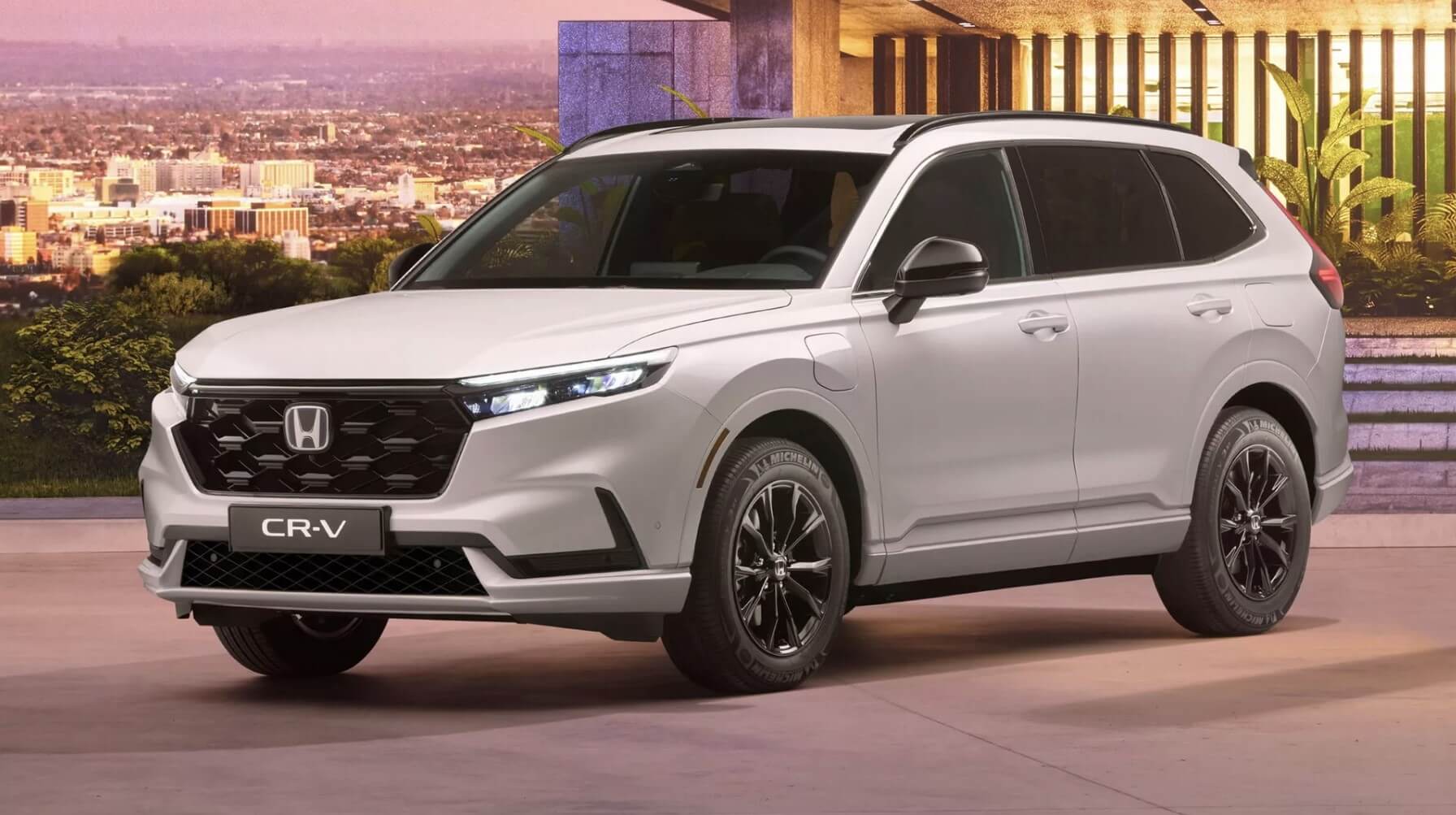
1. Honda CR-V
The Honda CR-V has built its legacy on being accessible and comfortable, and nowhere is that more evident than in its steering dynamics. The moment you take the wheel, you’ll notice just how little effort is required to turn the vehicle—especially at low speeds or when navigating crowded urban environments.
Honda employs an Electric Power Steering (EPS) system that’s tuned specifically for real-world use cases, and the calibration on the CR-V strikes a sweet balance between lightness and predictability. You can execute tight maneuvers like parallel parking or U-turns with ease, and it often feels like the SUV is doing most of the work for you.
Beyond just the steering weight, the feedback loop between the driver and the front wheels is muted, which is by design in this case. It offers a detached but calming feel, removing road harshness and vibration from the steering column. This is perfect for people who prioritize comfort and serenity over road feel.
Whether you’re weaving through a congested downtown area or gliding down a smooth suburban street, the CR-V’s steering remains feather-light yet directionally accurate. The effortlessness encourages confidence, especially for drivers who may not feel as secure behind the wheel of a larger SUV.
This light steering feel is also a benefit during long road trips. Many vehicles with tighter or more aggressive steering tuning can cause subtle fatigue over long periods of driving, especially if the road requires constant correction or attention.
The CR-V, however, allows the driver to relax their arms and shoulders, maintaining a smooth trajectory with minimal input. It’s the kind of driving experience that doesn’t make you think about the mechanics of it—it simply feels natural and requires little energy to operate.
Honda has fine-tuned the CR-V for mass appeal, and that includes making it unintimidating for drivers of all skill levels. From new drivers to aging adults, the CR-V welcomes everyone with a soft touch.
The vehicle almost seems to glide through traffic and parking lots, making it one of the most user-friendly SUVs in terms of steering feel. If you’re looking for something that won’t require effort or force to drive, the CR-V is one of the easiest recommendations in the entire segment.
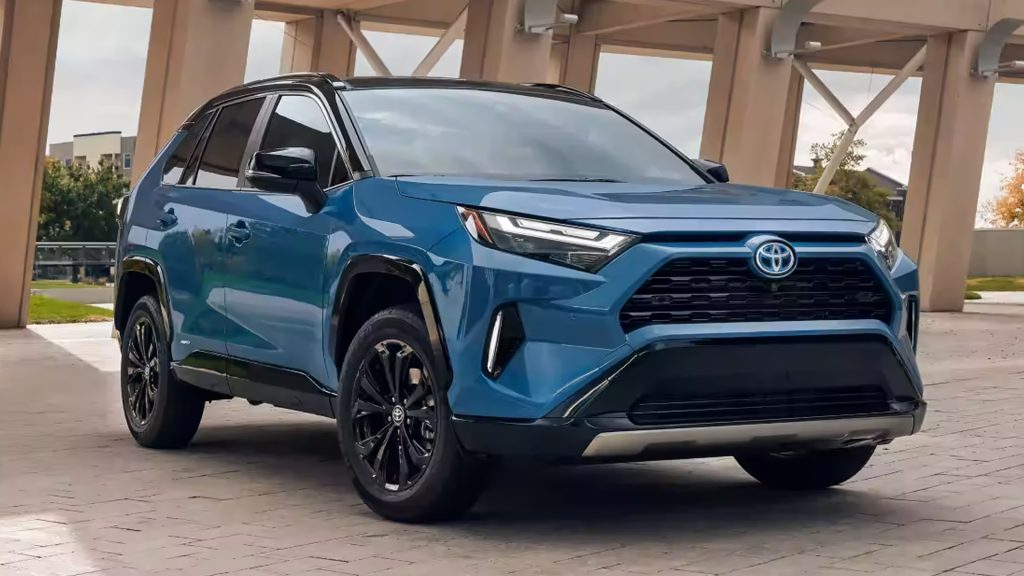
2. Toyota RAV4 (Non-Hybrid Trims)
Toyota’s RAV4 is one of the best-selling SUVs in the world, and a big part of its appeal is how intuitive and easy it is to drive. One of the unsung heroes of its daily usability is the steering system, particularly in its non-hybrid trims.
These versions skip the more aggressive suspension and sportier tuning that hybrid or TRD models receive, opting instead for a soft, welcoming setup that prioritizes driver ease. The result is a car that reacts quickly to minimal input, making it ideal for navigating tight areas, parking garages, or winding residential roads.
Where the RAV4 really shines is in urban environments. At lower speeds, the wheel practically turns itself, with electric assist providing ample support to the driver. You’ll rarely feel the need to grip the wheel tightly or use your upper body to complete a turn. For those who frequently drive in congested areas, this can reduce a lot of stress and physical fatigue.
The system is tuned to emphasize a frictionless feeling—almost like the steering is floating rather than mechanically engaging—which some may see as numb, but most will see as relaxing.
Toyota clearly understands its market demographic for the RAV4. Many buyers are daily commuters, families, or retirees looking for something that simply works without fuss. By prioritizing comfort and ease of control over sportiness, the RAV4 appeals to a broader range of drivers.
The feedback may be minimal, but the sense of security and ease makes up for it. There’s no second-guessing your inputs—just a smooth, cooperative response from the vehicle.
It’s also worth noting that the RAV4’s relatively compact dimensions and elevated seating position combine well with its light steering to make for excellent visibility and maneuverability.
The experience of driving the RAV4 is one of control without effort—a hallmark of a well-calibrated, user-friendly SUV. If your daily routine includes tight turns, slow-speed handling, or lots of starts and stops, the non-hybrid RAV4 trims offer an incredibly easy-going and ergonomic steering experience.
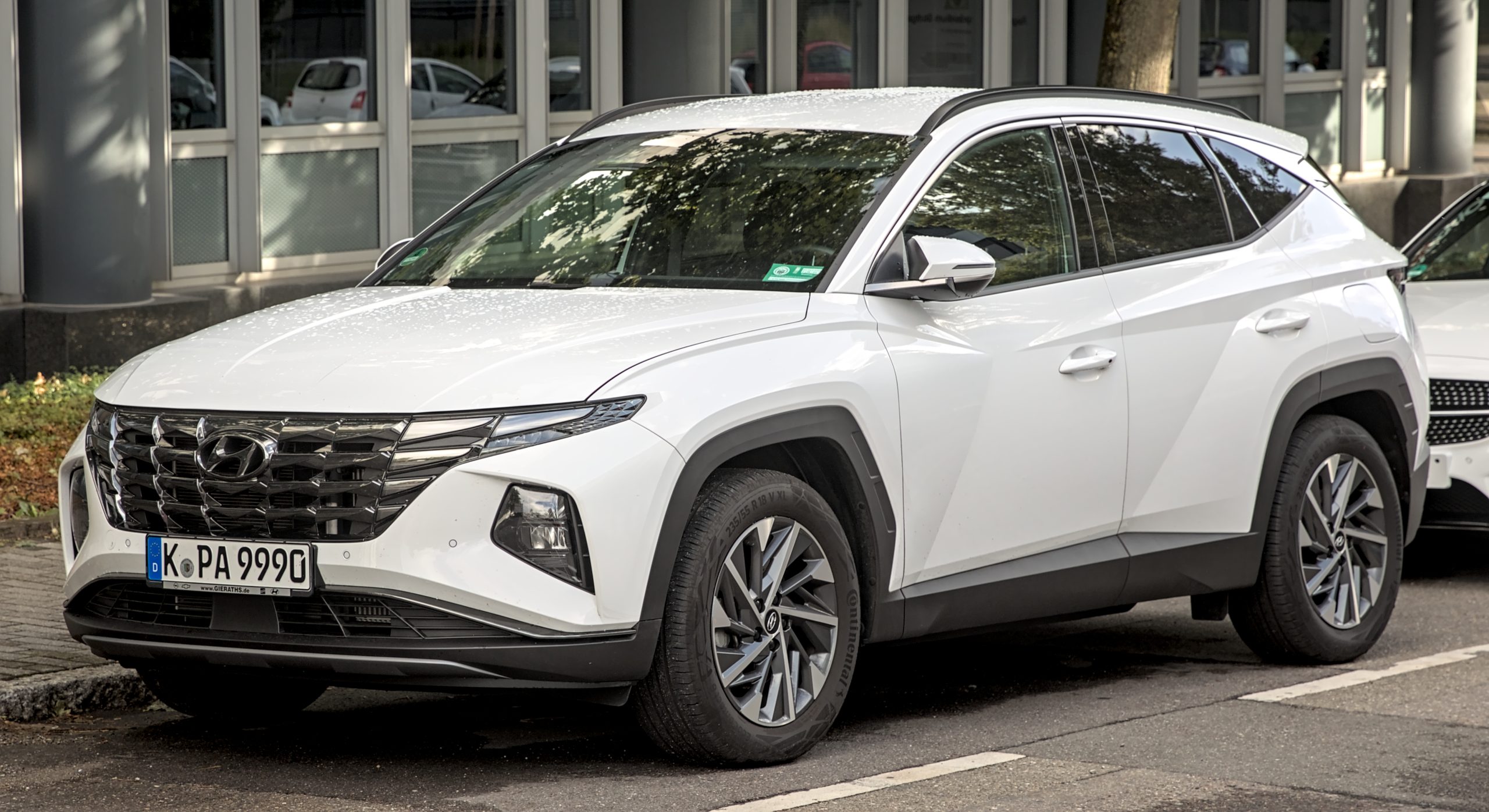
3. Hyundai Tucson
The Hyundai Tucson is one of those vehicles that quietly excels in almost every category, and its steering system is a standout for anyone seeking low-effort driving. From the first touch of the wheel, it’s clear that Hyundai has engineered the Tucson with user comfort at the forefront.
The light steering effort is immediately noticeable, especially when compared to earlier generations or rival SUVs in the same price range. Whether you’re new to SUVs or a seasoned driver, the Tucson offers an approachable and unintimidating experience.
At low speeds, such as in parking lots or when performing tight maneuvers, the wheel requires barely any force to rotate. The electric power steering system makes even tricky spaces feel manageable, and there’s minimal resistance from lock to lock.
This means the Tucson is not only easy to drive, but also very forgiving. You won’t find yourself overcorrecting or battling stiffness in the wheel. The learning curve is practically nonexistent, which is a testament to the SUV’s well-designed driver interface.
While some light steering setups can feel too vague, the Tucson manages to preserve just enough road feel to keep you connected to what the front wheels are doing. There’s a gentle resistance increase as you pick up speed, but never enough to feel heavy or clumsy.
This makes highway cruising relaxed and effortless, which is ideal for long-distance drivers or anyone commuting on a daily basis. The transition from city to highway driving is seamless—another sign of careful steering calibration.
Hyundai has come a long way in designing vehicles that feel premium, and the Tucson’s steering refinement reflects that progress. It doesn’t scream “sporty,” but it does scream “effortless,” and for many drivers, that’s far more important.
If you want a vehicle that drives like a much smaller car when it comes to steering effort—but still delivers the cargo space and capability of a compact SUV—the Tucson should absolutely be on your shortlist.
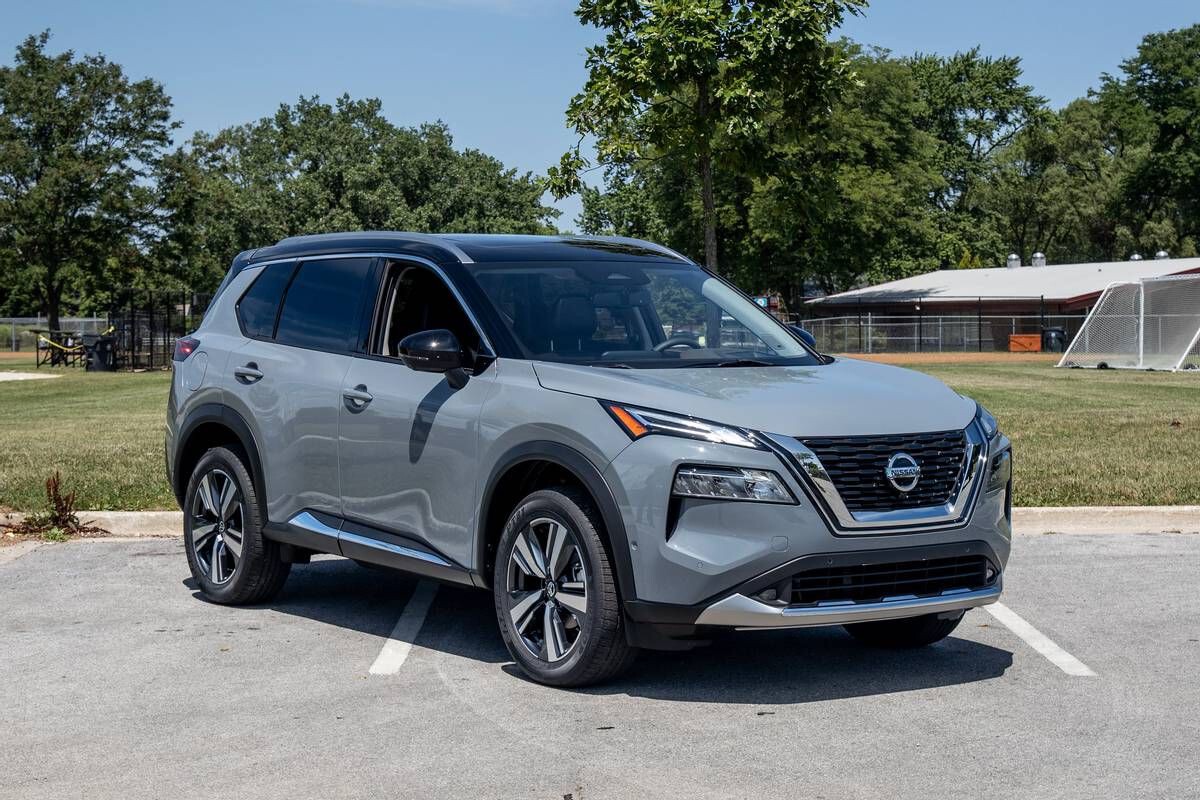
4. Nissan Rogue
The Nissan Rogue may not have the high-performance appeal of sportier SUVs, but it more than makes up for that with its everyday comfort and ease of use, especially in terms of steering.
It’s a car that feels light and airy the moment you get behind the wheel. The Rogue’s electric steering system is tuned for convenience, offering little resistance at low to moderate speeds. The feeling is one of effortlessness, as though you’re guiding the car more than steering it.
In day-to-day scenarios—such as navigating tight drive-thru lanes, executing three-point turns, or parking in narrow urban spaces—the Rogue really comes into its own.
The steering wheel requires minimal force to move, and because the vehicle is designed with excellent outward visibility, it’s even easier to place it exactly where you want. That combination of light steering and good sight lines makes for an intuitive, low-stress driving experience that feels like second nature after just a few drives.
Another advantage of the Rogue’s light steering effort is how it contributes to lower driver fatigue. Long days of errands or longer commutes can wear on your arms and shoulders if you’re constantly wrestling the steering wheel. In the Rogue, that’s not a concern.
It responds quickly and softly to inputs, which makes for a smoother, more controlled experience even in stop-and-go traffic. While it may lack some of the feedback purists want, it delivers exactly what most drivers need: calm, compliant control.
Nissan clearly designed the Rogue to be a family-friendly, convenience-focused SUV, and its steering system reflects that vision perfectly. It’s easy to pilot, never fights back, and stays consistently light under various conditions.
It may not offer dynamic thrills, but it offers something arguably more valuable for a huge portion of the market: a calm, predictable, and seriously low-effort steering experience that drivers of all ages and preferences can appreciate.
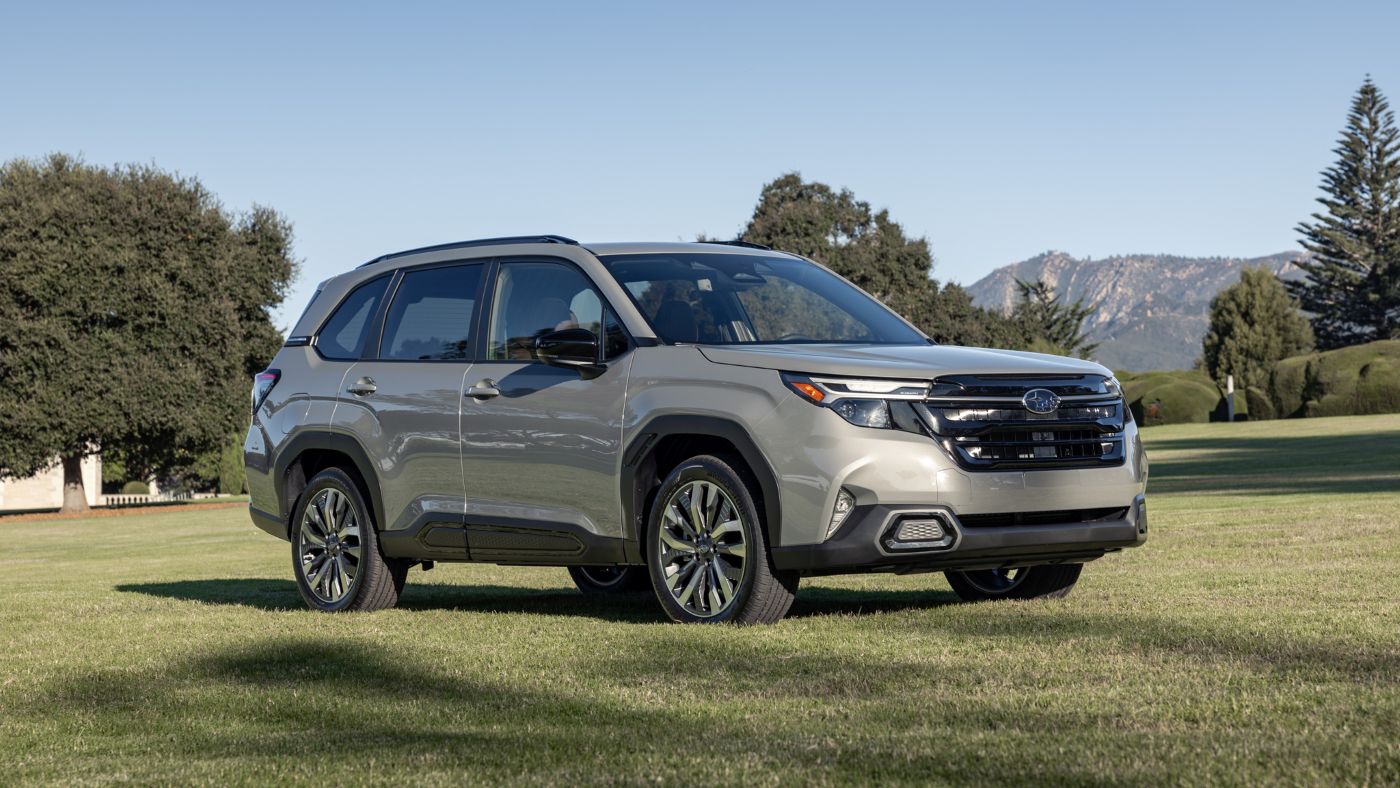
5. Subaru Forester
Subaru’s Forester is often lauded for its visibility, safety features, and go-anywhere attitude, but one of its underrated qualities is how easy it is to steer.
Despite being designed with ruggedness in mind, Subaru has smartly calibrated the Forester’s steering system to be approachable and fatigue-free. Even though it comes with standard all-wheel drive and a relatively tall ride height, the steering effort remains light—especially during city driving or when parking.
One of the biggest advantages of the Forester’s steering is how consistently easy it is, regardless of conditions. Whether you’re navigating a narrow alley or reversing into a parallel spot on a hill, the wheel responds quickly and requires little physical effort.
The electric power assist does a great job of masking the vehicle’s weight, making it feel smaller and more agile than it really is. Drivers who might be intimidated by larger SUVs often feel at home in the Forester within minutes of driving it.
At highway speeds, the steering tightens up slightly for stability, but not to the point of requiring more muscle. It remains composed and easy to adjust, which is helpful during long road trips or on curving rural roads.
There’s a reassuring steadiness to the Forester that instills confidence without making you work for it. You can drive for hours without feeling sore or tense from wrestling the wheel.
Subaru’s engineering ethos often focuses on balance, safety, and functionality—and the Forester’s steering embodies that perfectly. It’s not trying to impress with sharp turn-in or sporty weight; it’s built to provide reliable, low-effort control under all conditions.
If your priorities are comfort, safety, and ease of operation, the Forester delivers a well-rounded driving experience with one of the lightest and most consistent steering feels in the SUV market.
Arm Day Every Day: 5 SUVs with Heavier Steering Effort
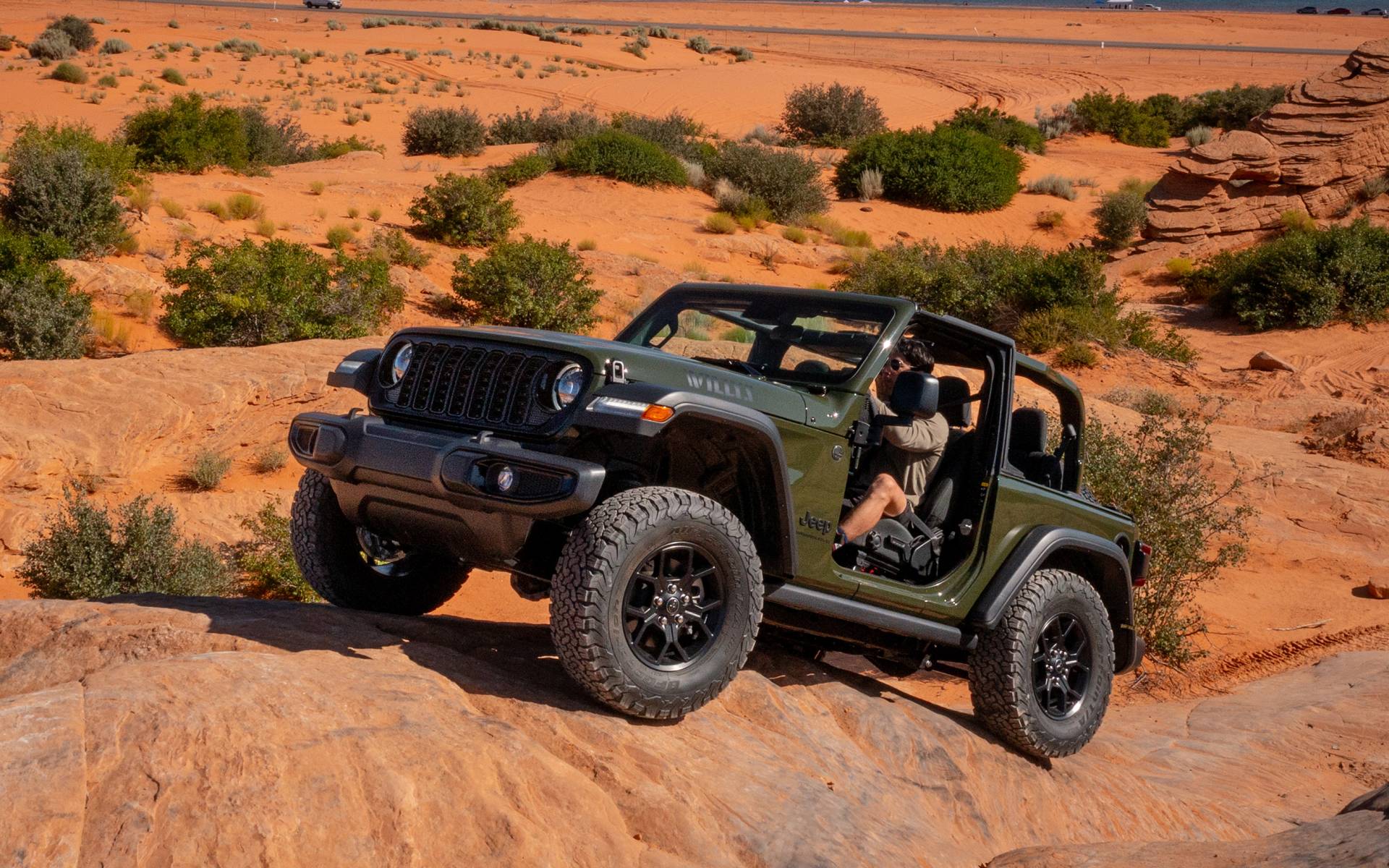
1. Jeep Wrangler
The Jeep Wrangler is a legend in the off-road world, but when it comes to steering ease, it makes no apologies. With a steering system that requires real physical input, especially at lower speeds and on pavement, the Wrangler practically defines the phrase “arm workout.”
From the first turn of the wheel, it’s clear that this SUV is built for rugged terrain—not for city maneuverability or relaxed highway cruising. If you’re coming from a light-steering crossover, the transition to the Wrangler can be jarring.
Part of the reason for the heavy steering feel is the Wrangler’s body-on-frame construction and solid front axle. Unlike most modern crossovers that prioritize comfort and efficiency, the Wrangler keeps it old-school for the sake of off-road capability.
This results in a steering system that feels mechanical, slow to respond, and resistant, especially at low speeds. Parallel parking or tight turns in an urban environment require more deliberate effort and often multiple corrections.
The large off-road tires also contribute to the heavy steering. While they’re perfect for gripping rocks, mud, and sand, they create a lot of resistance on pavement. This resistance translates directly to the steering wheel, where drivers can feel every bit of that rugged connection between the rubber and the road.
While off-road purists may love this level of feedback and control, casual drivers will likely find it tiring—especially if they’re navigating city streets, parking lots, or drive-thrus on a daily basis.
In addition, the steering ratio on the Wrangler is quite slow, meaning you’ll need to turn the wheel more than in other vehicles to achieve the same directional change.
This adds to the perception of heaviness, particularly when quick maneuvers are required. While this slower ratio makes sense in off-road settings where precision is more important than speed, it makes U-turns, lane changes, and tight city driving more cumbersome.
Highway driving in the Wrangler also has its quirks. Because of the vehicle’s high center of gravity and solid axle, the steering demands constant attention to keep the vehicle tracking straight.
Small corrections are needed often, and wind or uneven road surfaces can easily nudge the Wrangler off-course. This requires the driver to stay actively engaged with the wheel, which adds to long-term fatigue, particularly on road trips.
That said, there is a segment of drivers who actually appreciate this heavier, more physical feel. It connects them more directly with the mechanics of the vehicle, and for off-roading enthusiasts, that connection is part of the thrill.
However, for most daily commuters or new drivers, the Wrangler’s steering is likely to feel outdated and physically taxing. It’s a vehicle that demands attention, strength, and a bit of patience, particularly when used outside its natural off-road habitat.
If you’re considering a Wrangler, understand that the heavy steering isn’t a flaw—it’s a deliberate choice that reflects its design philosophy. But that choice comes at a cost in daily drivability. If you’re looking for easy, one-hand steering and casual comfort, this probably isn’t the SUV for you.
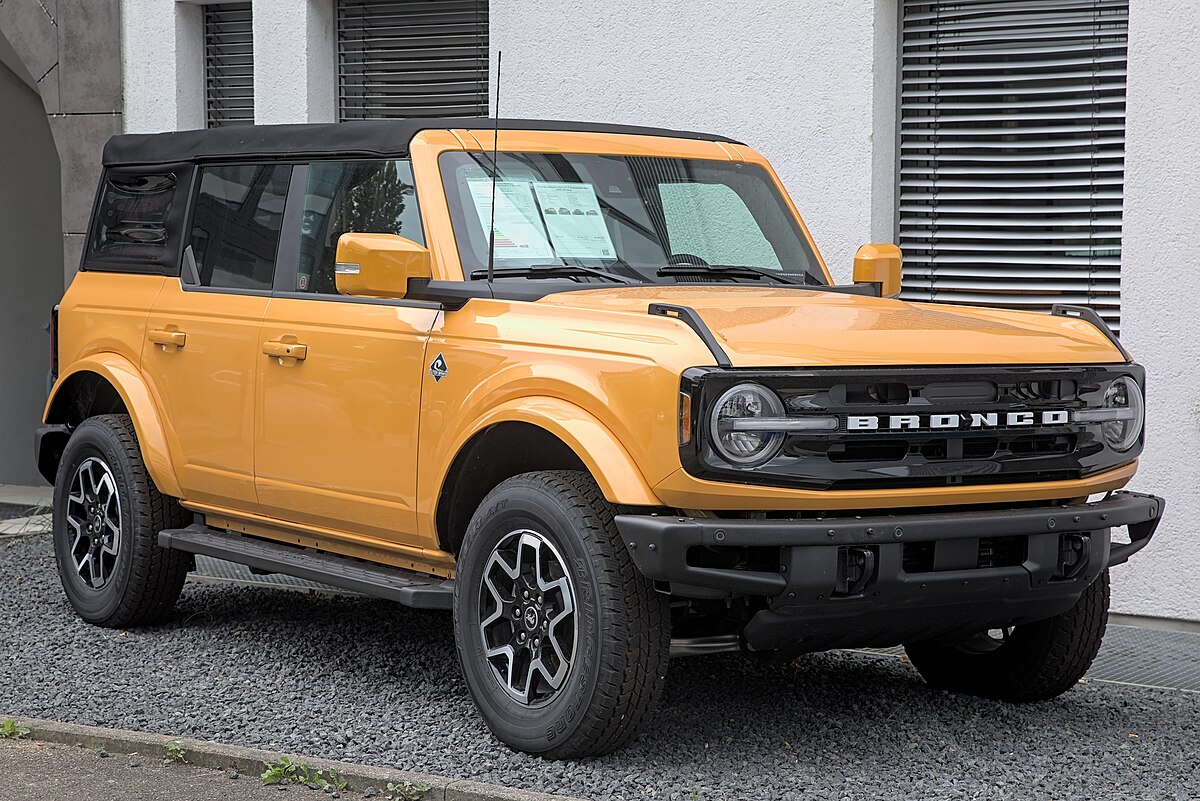
2. Ford Bronco (Base and Black Diamond Trims)
The Ford Bronco was built to challenge the Jeep Wrangler off-road—and in doing so, it adopted many of the same design traits, including a hefty steering feel.
While it’s a bit more refined on pavement than the Wrangler, the Bronco still requires serious upper-body involvement at times, especially in its lower trims with larger tires and basic suspension setups. It’s an SUV that makes you feel like you’re in control of something truly robust, for better or worse.
In the base and Black Diamond trims, the Bronco features an off-road-focused setup with relatively large tires and a traditional ladder-frame chassis. This design delivers durability and capability but sacrifices lightness and finesse.
The steering wheel offers more resistance than most drivers are used to, especially if you’ve spent any time in crossovers or unibody SUVs. Moving the wheel from lock to lock can feel like a slow, deliberate action—not something you’d want to do repeatedly in a parking garage.
Much like the Wrangler, the Bronco uses a recirculating ball steering system in many trims rather than the more common rack-and-pinion. While great for durability and ruggedness, it offers less precision and more weight at the wheel.
Quick inputs don’t translate instantly to wheel changes, which can be unsettling for drivers unfamiliar with such a setup. This adds to the sense of heaviness, especially at lower speeds or when trying to make precise adjustments.
Despite being heavier than ideal for daily driving, the Bronco’s steering does start to feel more balanced at higher speeds. Once you’re on a wide-open highway or long stretch of road, the steering becomes more predictable, even if it never feels exactly “light.”
That said, it still requires a fair amount of correction, especially on windy days or uneven pavement. You’re always a bit more actively engaged than you might be in a more street-focused SUV.
Interestingly, the Bronco’s steering heaviness varies significantly between trims. Higher trims with the Sasquatch package or the Badlands edition get adaptive dampers and other refinements that help reduce steering load slightly.
But in the base and Black Diamond trims, you’re getting a much more raw experience. This may appeal to some purists but proves exhausting for those simply trying to get through a day of errands.
Drivers who live in tight urban areas or frequently do parallel parking will probably find the Bronco’s steering feel to be more labor-intensive than they’d prefer. It’s a vehicle that asks something of you—especially your arms and shoulders.
If you’re not used to that, it can become a chore rather than a joy. While it’s a beast off-road, it definitely makes you earn your turns on the pavement.
For buyers considering the Bronco as an all-purpose SUV, it’s important to test-drive and feel out how the steering responds to daily life. What feels rugged and cool on a trail can feel clunky and resistant on a suburban street. That contrast is key to understanding the Bronco’s split personality—and its heavy-handed steering is central to that duality.
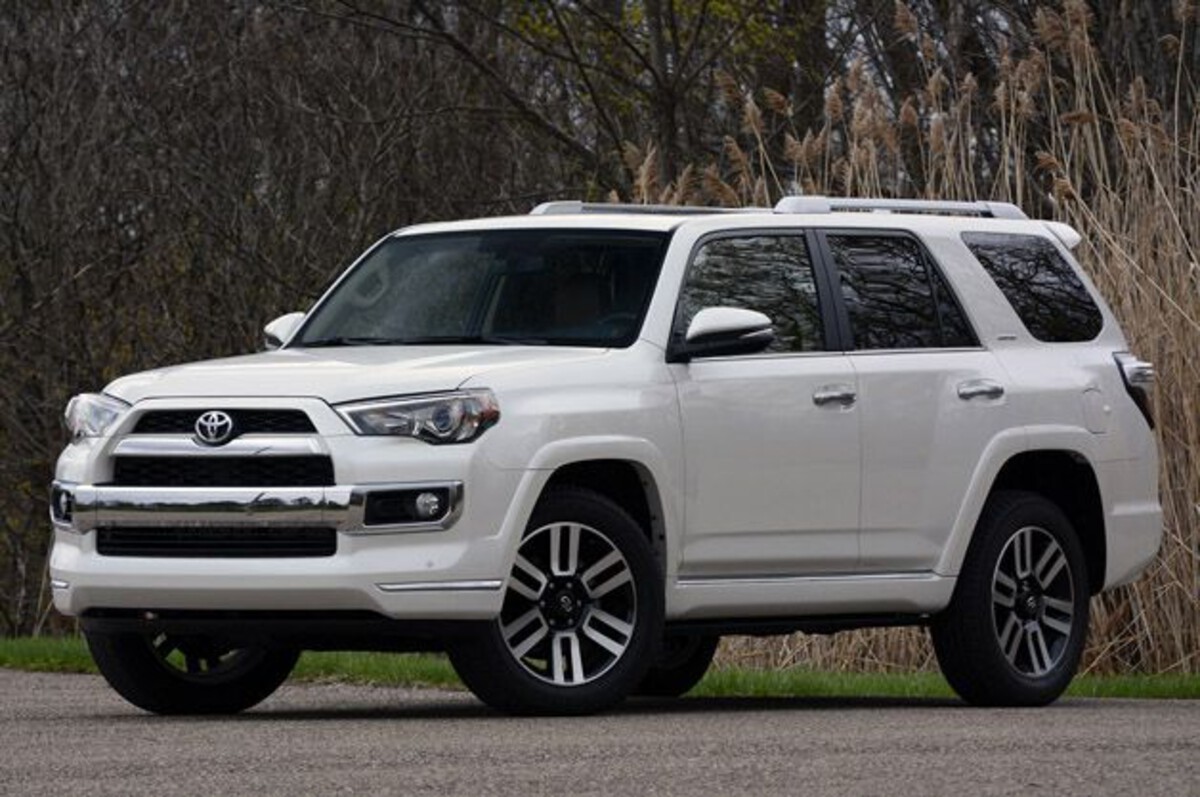
3. Toyota 4Runner
The Toyota 4Runner is an SUV that wears its heritage proudly, and that heritage includes some old-school steering traits. In a world where most vehicles are moving toward comfort-oriented electric steering, the 4Runner still feels like it belongs to another era—one where the driver had to put in a bit more physical effort to maneuver a vehicle.
And while that rugged quality appeals to many traditional SUV lovers, the reality is that the 4Runner requires more upper-body engagement than almost any other Toyota on the market today.
One of the reasons the 4Runner’s steering feels so heavy is its body-on-frame architecture and high ground clearance. These characteristics, while excellent for off-road durability, contribute to a more disconnected and slower steering experience on paved roads.
Turning the 4Runner at low speeds feels deliberate, almost tractor-like, especially in tight parking spaces or small driveways. It’s not the kind of vehicle you can maneuver with a flick of the wrist—you’ve got to mean it.
Adding to the heaviness is the steering ratio itself, which feels slow compared to modern unibody crossovers. You often have to turn the wheel much farther than you’d expect to get the vehicle pointed where you want it to go.
This means a lot of arm movement, particularly when performing quick corrections or navigating dense traffic. There’s no sense of nimbleness or lightness here—every turn of the wheel feels like it’s moving several tons of metal (which, to be fair, it is).
While some people appreciate the solid, connected sensation that the 4Runner provides, others may find it unnecessarily taxing, especially if their driving is 90% suburban or urban.
Long commutes and city errands in the 4Runner can lead to sore shoulders over time, particularly when compared to more modern SUVs with lighter steering. It’s a vehicle that demands involvement—and not always in a pleasant, enthusiast-oriented way.
That said, off-road enthusiasts often enjoy the 4Runner’s heavier, more deliberate steering feel because it provides a sense of connection with the terrain. When climbing trails or descending rocky hills, the additional steering weight can offer reassurance.
It reminds you that you’re in control of a serious machine—one designed to take a beating and keep going. In these environments, the 4Runner feels right at home.
Unfortunately, the downside is that even on the highway, the steering doesn’t really lighten up. The 4Runner can feel a bit twitchy and requires constant small corrections to maintain a straight path. This is particularly noticeable during crosswinds or when driving over uneven surfaces.
Unlike more modern SUVs that seem to “self-correct” or track smoothly, the 4Runner keeps the driver active and alert—which isn’t always what you want during a relaxing road trip.
In short, the 4Runner is a great vehicle if you want toughness and longevity. But if you’re looking for a comfortable daily driver with steering that doesn’t feel like it came from a 1990s pickup, be prepared: the 4Runner’s heavy steering is part of its DNA, and it’s not going anywhere anytime soon.
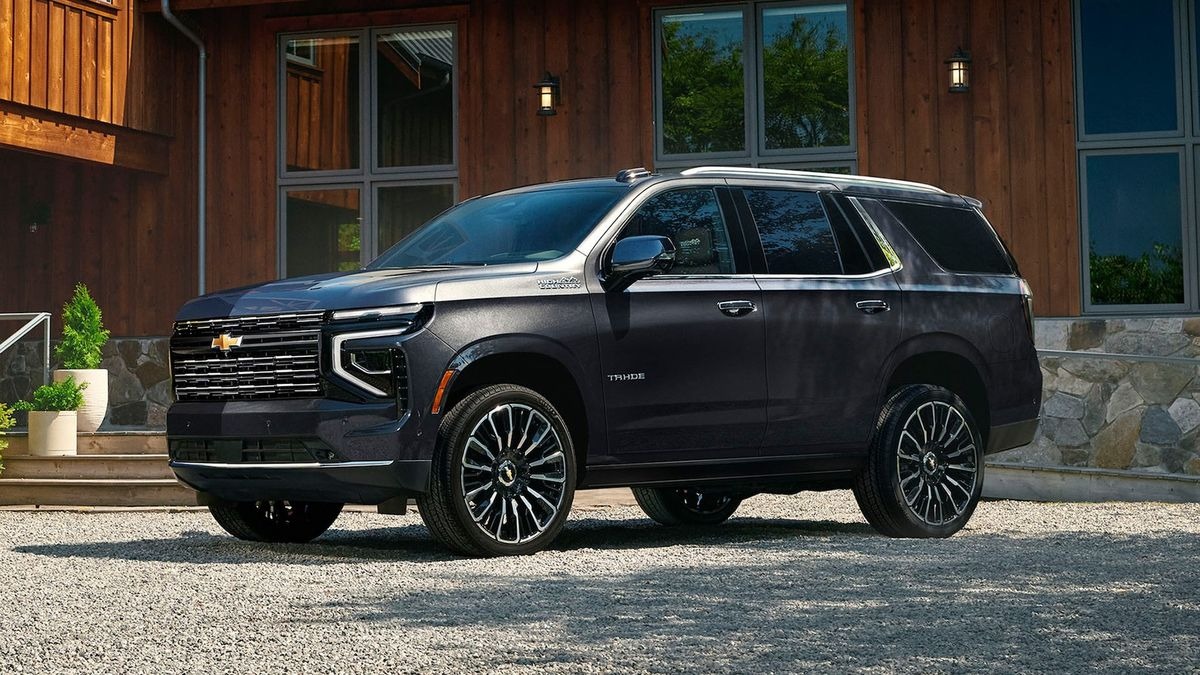
4. Chevrolet Tahoe
The Chevrolet Tahoe is a full-size SUV built for serious hauling, whether it’s people, cargo, or trailers. That heft is obvious from the first moment you turn the steering wheel. With a curb weight often exceeding 5,500 pounds and dimensions that rival some delivery trucks, the Tahoe’s steering effort matches its size—and for many drivers, that translates into a full upper-body experience.
The Tahoe uses an electric power steering system, but even with assistance, the feel is notably heavy at lower speeds. In parking lots or tight city situations, turning the wheel can require some force—especially if you’re not moving.
While GM has improved the system in recent generations, the sheer physics of the Tahoe’s size work against you when making tight maneuvers. It’s not uncommon to see drivers using full-arm sweeps to move the wheel from lock to lock.
Part of the issue is that the Tahoe has a large turning radius, which means you often have to perform multi-point turns or swing out wide to make tighter curves. This puts extra demands on the steering and can be a bit of a workout in urban driving.
Parallel parking or threading the vehicle through a cramped driveway requires not only skill but also a certain level of physical commitment. It’s not impossible—it’s just something you feel in your arms.
That said, the Tahoe starts to settle down once it’s moving at speed. On the highway, the steering still feels heavy, but it becomes more stable and less labor-intensive. At 65 mph, it delivers a solid, planted feel that many drivers find reassuring.
You won’t get a light or playful response from the wheel, but you will get confidence in the vehicle’s composure—particularly when carrying passengers or towing.
Another factor contributing to the heavier feel is the Tahoe’s suspension tuning, especially in trims not equipped with adaptive dampers or air ride.
On these models, the steering tends to feel weightier because the suspension doesn’t isolate as well as it could. As a result, the driver feels more of the vehicle’s bulk through the wheel, especially over uneven terrain or during quick direction changes.
Drivers who are used to smaller SUVs or sedans often need a significant adjustment period when transitioning to a Tahoe. Everything about the vehicle requires more attention and more physical energy—including the steering.
That’s not necessarily a negative if you’re specifically shopping for a full-size SUV with massive towing and passenger capabilities. But if you’re just looking for a family hauler, there are easier options out there in terms of effort.
In conclusion, the Tahoe’s heavy steering effort is closely tied to its mission as a full-sized utility vehicle. It’s not meant to be dainty, and it certainly isn’t. But that added effort can wear on you, especially during repeated low-speed tasks. It’s worth a test drive to see if your arms are up for the job.
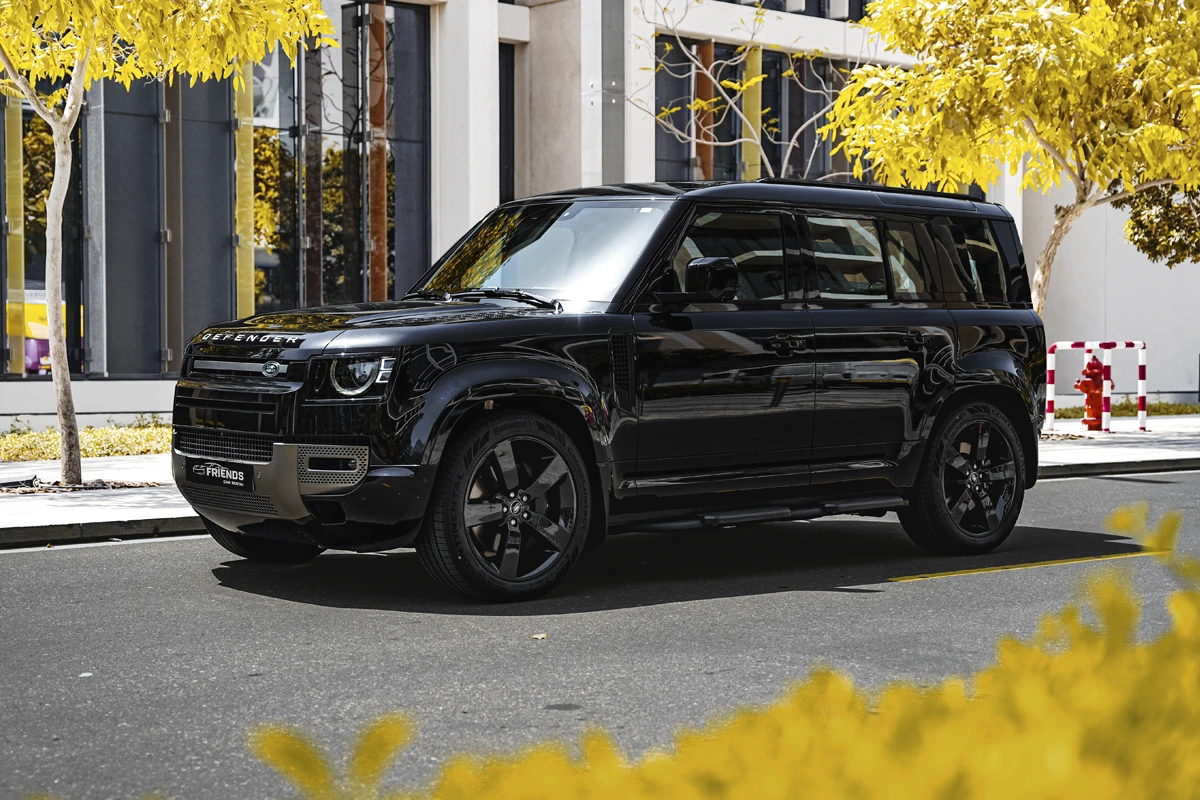
5. Land Rover Defender (110 and 130 Trims)
The Land Rover Defender is a luxury SUV with serious off-road credentials—and a surprisingly heavy steering effort, particularly in its larger 110 and 130 variants.
Despite being packed with tech, air suspension, and off-road goodies, the Defender demands physical presence from the driver. If you’re expecting the effortless lightness found in Range Rovers, the Defender will quickly remind you that it’s built for adventure, not for ease.
Right off the bat, the steering feels more resistant than you’d expect from such a polished vehicle. While not brutish or unrefined, it’s deliberately weighted to give the driver a sense of control, especially in adverse conditions.
Land Rover likely designed it this way to reflect the Defender’s rugged purpose, but in city driving, this can become burdensome. Navigating tight corners or small parking spots requires more steering wheel movement and more force than most other luxury SUVs.
Unlike lighter-handling crossovers, the Defender also requires more frequent corrections at low speeds, especially when reversing or performing complex turns.
The resistance from the steering isn’t necessarily harsh, but it’s noticeable and can create an impression of sluggishness. Add in the 130’s extended wheelbase, and the driver is dealing with a lot of real estate—both physically and mentally—every time they maneuver the vehicle.
At highway speeds, the steering starts to feel more appropriate. The extra weight provides a sense of directional stability, which is useful when cruising across long distances. But that weight doesn’t disappear.
There’s no feeling of the wheel relaxing into the drive—it always requires a bit more engagement than you’d expect from a luxury-badged vehicle. This is particularly noticeable when compared to lighter competitors like the Audi Q7 or BMW X5.
In off-road situations, the heavier steering is more welcome. It provides valuable feedback on terrain and resistance, allowing the driver to feel more in tune with the surface below.
When climbing over rocks or descending muddy hills, the heavier feel adds to the perception of control. But the problem is that most Defender owners don’t spend 90% of their time off-road—they’re on pavement, in traffic, or doing school runs—and that’s where the steering can feel unnecessarily demanding.
Another factor is the defensive nature of the vehicle’s geometry and tires, which are made to withstand rough terrain rather than optimize city driving.
These tires add resistance, and the taller suspension geometry contributes to a truck-like feeling at the wheel. It’s all very intentional, but for some drivers—especially those expecting Range Rover ease with Defender styling—it can be a bit of a rude awakening.
Ultimately, the Defender is a brilliant vehicle in terms of capability and character. But when it comes to steering effort, it’s on the heavier end of the spectrum.
If you’re looking for a luxury SUV that’s easy to handle in tight, everyday scenarios, the Defender may not be the smooth operator you’re hoping for. But if you’re up for the challenge—and the prestige—it’s a rewarding experience that just happens to require a little extra arm strength.
Also Read: 5 Trucks with The Best Cold-Start Defrosters and 5 Taking Ages
In the world of SUVs, steering effort is more than just a technical specification—it’s a vital part of the driving experience that can influence everything from comfort and fatigue to confidence and control. After examining five SUVs with the lightest steering effort alongside five that require a more muscular approach, it’s clear that steering feel is as diverse as the vehicles themselves.
For drivers who prioritize ease and convenience, the SUVs with light steering effort stand out as champions of daily usability. These vehicles showcase how advancements in electric power steering technology and modern chassis design can transform what used to be a tiring task into an effortless, even enjoyable, interaction.
Models like these offer nimble maneuverability in crowded parking lots, smooth highway cruising, and a relaxed driving posture that reduces arm and shoulder strain. They cater especially well to urban dwellers, commuters, and anyone who values convenience without sacrificing capability.
On the other hand, SUVs with heavier steering effort serve a different purpose—one that values ruggedness, durability, and control under demanding conditions. These vehicles, from classic off-road icons like the Jeep Wrangler to full-size workhorses like the Chevrolet Tahoe, demand more physical engagement from their drivers.
The weighty steering feels deliberate and connected, giving the driver a tangible sense of the vehicle’s heft and the road’s texture. While this can translate to arm fatigue during long or congested drives, it also provides invaluable feedback and control when navigating challenging terrain or hauling heavy loads.
What emerges from this comparison is that neither light nor heavy steering effort is inherently “better.” Instead, the ideal steering feel depends heavily on the driver’s priorities, driving environment, and intended use.
Someone who spends most days in stop-and-go traffic will almost certainly appreciate the ease of light steering, while a weekend adventurer tackling rough trails may welcome the feedback and solidity of heavier steering. The key takeaway is to understand these differences and test them firsthand before committing to a vehicle.
Moreover, it’s important to recognize how engineering decisions affect steering feel. Body-on-frame SUVs, solid axles, large tires, and slower steering ratios often correlate with heavier steering, while unibody designs, electric power assist systems, and smaller tires contribute to lighter, more responsive handling.
This knowledge equips buyers with insight into the trade-offs involved in each vehicle’s design and what those trade-offs mean for everyday driving. For prospective SUV buyers, the steering effort can sometimes be overlooked in favor of more glamorous features like infotainment, horsepower, or design.
However, as this article demonstrates, the physical experience of turning the wheel has profound implications on how enjoyable and manageable your drives will be. Steering that feels too heavy can lead to fatigue and frustration, while steering that feels too light might result in a lack of feedback and confidence at speed.
Ultimately, choosing the right SUV involves balancing all these elements—performance, comfort, capability, and yes, steering effort. Whether you lean toward the feather-light touch of modern crossovers or the demanding yet rewarding heft of off-road legends, understanding steering effort helps you make a choice that matches your driving style and lifestyle.
In conclusion, next time you’re shopping for an SUV, don’t just sit in the driver’s seat—grip the wheel, turn it, and feel the effort it takes. Consider how that effort will feel during your typical drive, and whether it enhances or detracts from your experience. Steering effort is a silent but crucial part of vehicle dynamics that shapes your relationship with your SUV every time you hit the road.
By appreciating the nuances of steering effort and knowing which SUVs sit where on the spectrum from light to heavy, you’re better equipped to find a vehicle that not only looks good on paper but feels perfect in your hands. Whether you’re seeking effortless elegance or rugged control, this awareness will ensure that your next SUV is a pleasure to steer—day after day, mile after mile.

